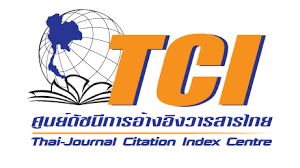Infection prevention and control practices in the radiology department: An Asia-Oceania survey
DOI:
https://doi.org/10.46475/asean-jr.v26i3.974Keywords:
Infection prevention and control,, healthcare-associated infections,, radiology department, Asia-Oceania, Standardized Guidelines, Policy implementation, AOSR Quality and SafetyAbstract
ABSTRACTObjective: To evaluate the current infection prevention and control (IPC) practices in radiology departments (RDs) across the Asia-Oceania region (AOR) and identify strengths and improvement areas to promote the development of standardized IPC guidelines tailored to diverse local contexts.
Materials and Methods: In November 2023, the Asian Oceanian Society of Radiology (AOSR) Quality, Safety, and Standards Committee distributed a structured survey to radiology professionals across 22 countries, special administrative regions (SAR), or territories. The survey assessed five key areas: demographics, policy implementation, room assessment, departmental IPC practices, and recent measures. Descriptive statistics were used to analyze the responses. Ethical approval was obtained, and participation was voluntary.
Results: We received 122 responses from 22 countries, regions, or territories in reply to the survey. While 74.6% (88/118) of countries had national IPC programs, only 68.9% (84/122) of RDs had department-specific IPC policies, with 50.8% (62/122) adhering to WHO guidelines. 96.7% (118/122) of RDs reported adequate hand hygiene facilities, and 82.0% (100/122) had sufficient personal protective equipment. However, practices such as patient screening and disinfection after use were inconsistent. The COVID-19 pandemic prompted 85.2% (104/122) of RDs to enhance infection prevention and control (IPC) measures, including audits and new isolation protocols. Staff training and IPC adherence varied widely, with only 62.3% (76/122) of RDs reporting consistent adherence to IPC.
Conclusion: The survey highlights that, despite significant progress in IPC practices across RDs in the AOR, gaps in policy standardization, staff training, and resource allocation remain. Enhancing education, promoting a no-blame culture, and aligning departmental policies with international guidelines are essential for improving patient safety and reducing healthcare-associated infections. Tailored AOSR guidelines could address regional disparities and foster consistent IPC implementation.
Downloads
Metrics

Downloads
Published
How to Cite
Issue
Section
License
Copyright (c) 2025 The ASEAN Journal of Radiology

This work is licensed under a Creative Commons Attribution-NonCommercial-NoDerivatives 4.0 International License.
Disclosure Forms and Copyright Agreements
All authors listed on the manuscript must complete both the electronic copyright agreement. (in the case of acceptance)
















